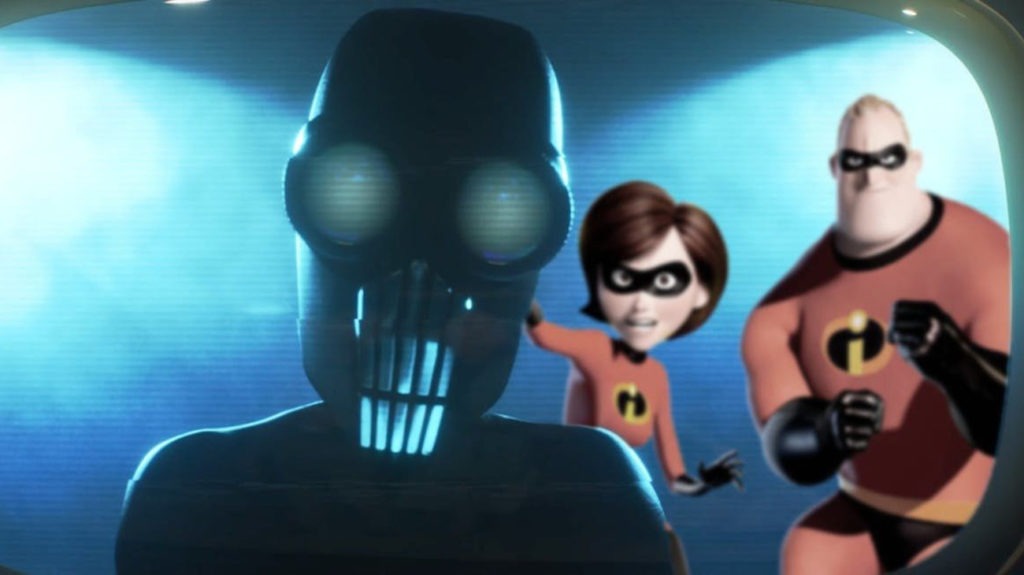Beware of spoilers for the last decade of Disney films – ed.
What’s your favorite Disney villain? When answering this question, most people will be able to rattle off a number of possibilities within seconds. Maleficent, Jafar, Captain Hook, Scar, Ursula, Cruella De Vil. There are so many options you’ll have a hard time narrowing your list to just one. The responses are totally different, however, when we tweak the question just a bit: What’s you favorite Disney villain of the past ten years? Suddenly the pool dries up and you’re left with Tangled‘s Mother Gothel (a superb villain in her own right) as the only reasonable option. These days, most Disney movies are saddled with utterly forgettable adversaries, and that’s if they feature a villain at all. Can you even remember the name of the main villain in Zootopia, Big Hero 6, or The Princess and the Frog? Villains have disappeared from Disney movies, and that’s a problem. Not because villains are essential to good cinema (although who doesn’t love a great villain?), but because the studio’s new approach to villainous characters points toward bigger problems in the way they make movies.
The main reason Disney hasn’t produced a memorable villain in almost a decade has to do with story structure. At some point in the past ten years, Disney Animation Studios his on a seemingly winning formula they refuse to let go. I call it the “Third Act Reveal Villain.” Here’s how it works: A seemingly harmless character is introduced in the first half of the movie -they can be a mentor, an authority figure, or a romantic interest. They spend most of the movie playing a supporting role until the third act comes along and they are revealed to have been a villain all along. This structure has become completely ubiquitous in Disney Animation. If we count both Disney and Pixar movies, “Third Act Reveal Villain” has been used six times in the past seven years. That’s more than half the movies they’re released in that time.
On the one hand, it’s easy to see why Disney (and Pixar) would have gravitated toward this type of villain. There is something inherently satisfying in seeing the pieces of a puzzle come together, and holding off the identity of your villain until the end of the movie can be satisfying in the same way. This set-up works best when the villain’s identity not only comes as a surprise, but speaks to the themes of the movie. The best example of this is Frozen, in which the revelation that Hans is a heartless bastard reinforces the movie’s message about sisterhood. However, the people at Disney seem to use this set-up regardless of whether it fits in with the movie’s message. I guessed the identity of the Screensaver (the main villain in this year’s Incredibles 2) as soon as the character appeared on screen, and there was no essential reason why said identity had to be a secret. At this point, the revelation of who is a bad guy in a Disney movie is as predictable as the conclusion of a Scooby-Doo episode.
Why can’t Disney see that this once innovative structure has become a total hindrance? It has to do with the reason it began applying this structure in the first place. In the 2000s, Disney Animation Studios was floundering with flop after flop while Pixar was releasing one masterpiece after another. When Disney bought Pixar, head of animation John Lasseter decided to revitalize Disney Animation by applying the same principles that made Pixar such a success. Perhaps the most distinctive element of the Pixar method (other than their pioneering use of computer-generated animation) is the way they spend at least two years just breaking down the story of their movies. They want to make sure that every single nook and cranny is its place and that the story is completely satisfying. For a while, this method seemed flawless, resulting in one great movie after another, but more than two decades into the creation of Pixar, the results are starting to thin out. Pixar has grown more and more reliant on plot mechanics, resulting in movies that are overstuffed with plot and become wholly predictable. This was most apparent to me last year when the fact that I could see where we were heading from the minute the movie started made me feel like a heartless monster for not crying at the end of Coco.
The thing is, when you think about your favorite Disney movie, what do you remember about it? Is it the plot of the movie, or is it your favorite song, your favorite character, a wonderful set-piece. Animation is the medium of endless possibilities and it thrives when it can look beyond plot. A solid story is a strong foundation, but the greatest moments in animation occur when that foundation is used as a jumping off point onto something else. To character movement, to color, to bending shapes and bending minds. The two most indelible memories I have of Incredibles 2 are the incredibly chase-sequence with the Elasticycle and the hilarious brawl between Jack-Jack and that poor raccoon, neither of which are fundamental elements to the plot of the movie. If we’re talking about villains, think of the moment when Maleficent turns into a dragon, the way Cruela De Vil looks totally demented behind the wheel of her car, the cruelness of Scar leaving Mufasa to his death. “Third Act Reveal Villains” are plot twists, and plot twists have notoriously short shelf-lives. They get old minutes after they first occur. A great villain, on the other hand… those can last forever.
Conrado Falco is a New York-based playwright who loves movies. He publishes most of his film writing at CocoHitsNY, but the best way to keep up with him is to follow him on Twitter (@CocoHitsNewYork).
